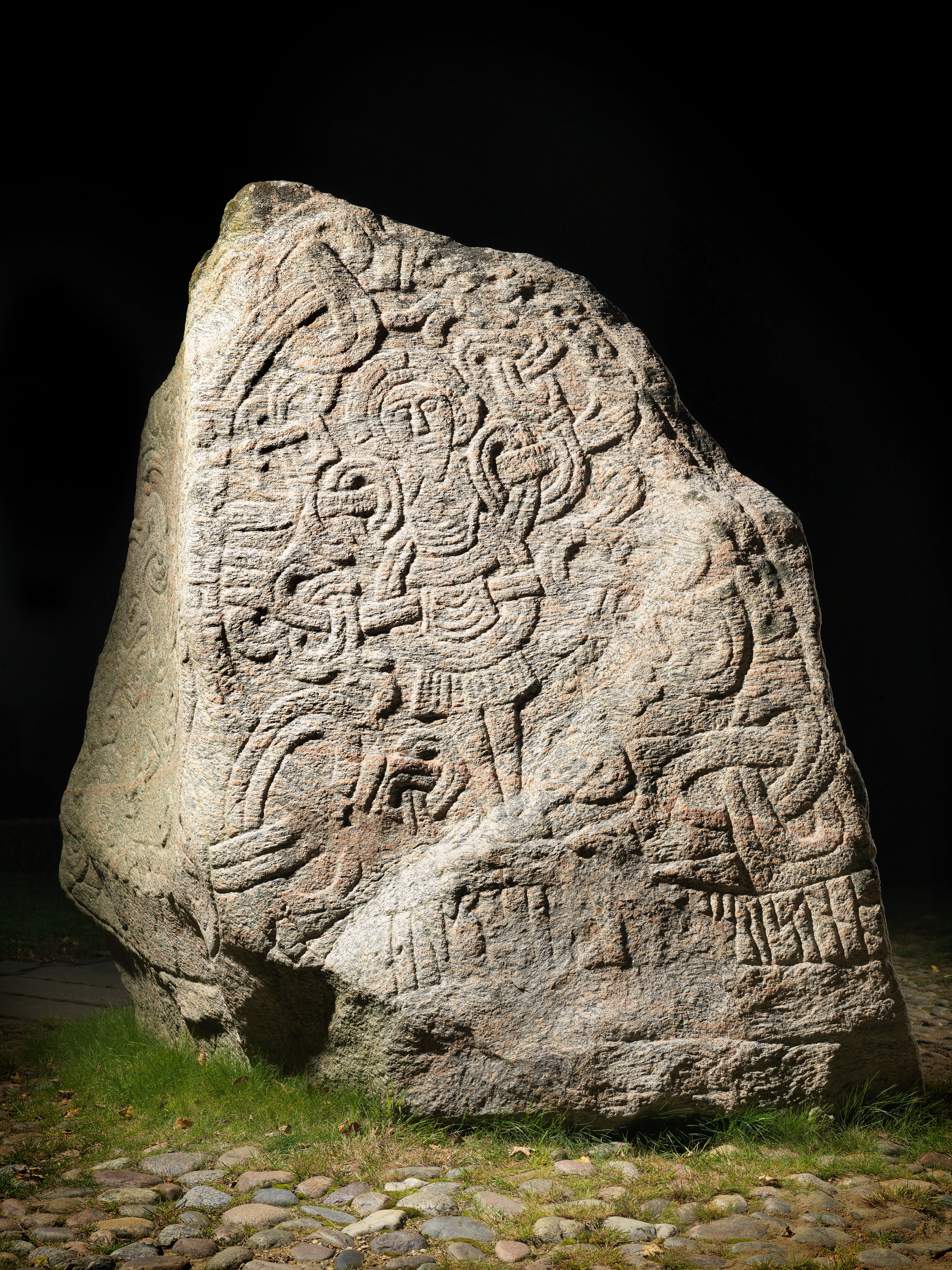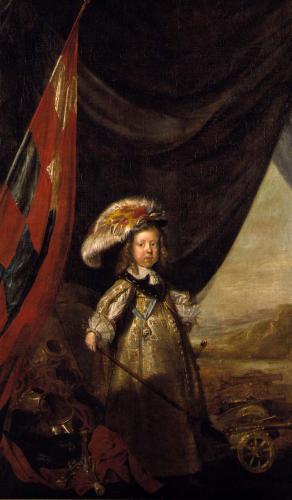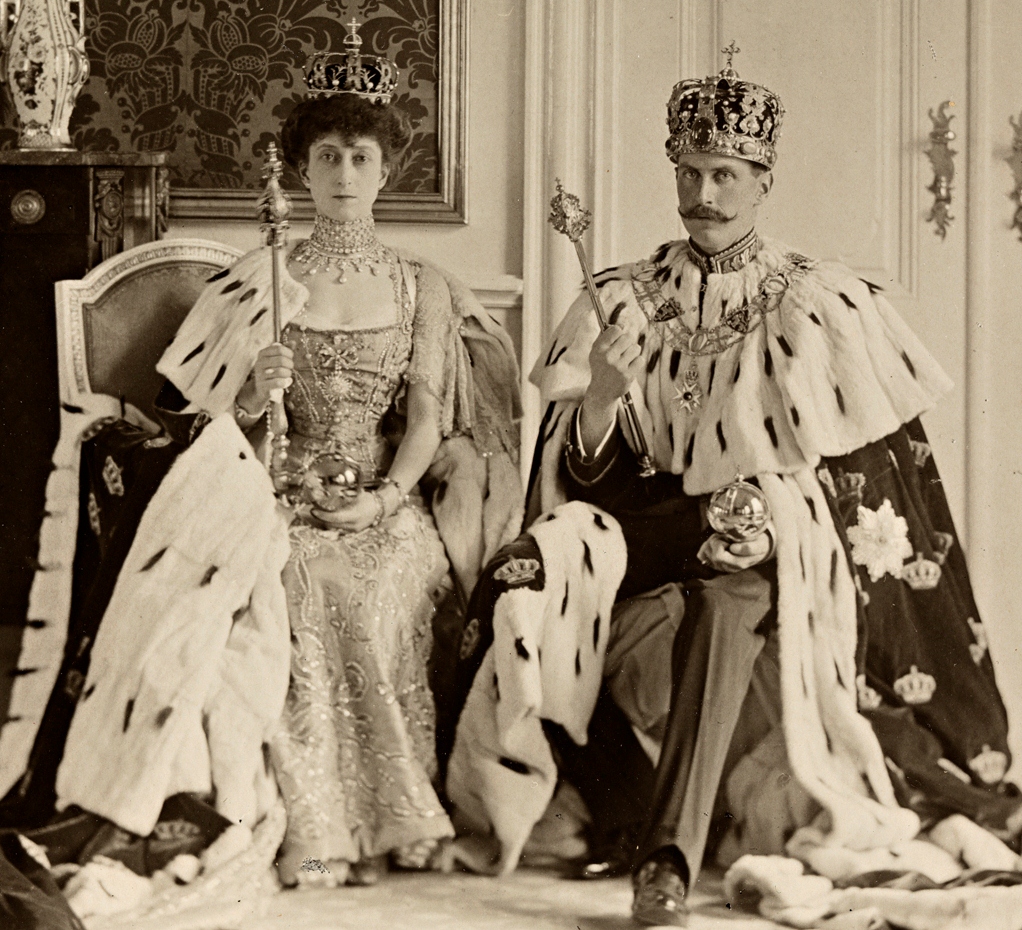|
George, Prince Of Denmark
Prince George of Denmark ( da, Jørgen; 2 April 165328 October 1708) was the husband of Anne, Queen of Great Britain. He was the consort of the British monarch from Anne's accession on 8 March 1702 until his death in 1708. The marriage of George and Anne was arranged in the early 1680s with a view to developing an Anglo-Danish alliance to contain Dutch maritime power. As a result, George was unpopular with his Dutch brother-in-law, William III, Prince of Orange, who was married to Anne's elder sister, Mary. Anne and Mary's father, the British ruler James II and VII, was deposed in the Glorious Revolution in 1688, and William and Mary succeeded him as joint monarchs with Anne as heir presumptive. The new monarchs granted George the title of Duke of Cumberland. William excluded George from active military service, and neither George nor Anne wielded any great influence until after the deaths of Mary and then William, at which point Anne became queen. During his wife's reign, Geor ... [...More Info...] [...Related Items...] OR: [Wikipedia] [Google] [Baidu] |
Duke Of Cumberland
Duke of Cumberland is a peerage title that was conferred upon junior members of the British Royal Family, named after the historic county of Cumberland. History The Earldom of Cumberland, created in 1525, became extinct in 1643. The dukedom was created in the Peerage of England in 1644 for Prince Rupert of the Rhine, nephew of King Charles I. When he died without male heirs, the title was created again in the Peerage of England in 1689 for Prince George of Denmark, husband of Princess Anne, younger daughter of King James II. He also died without heirs, in 1708. Neither of these men, however, was usually known by his peerage title. The third creation, in the Peerage of Great Britain, was for Prince William, the third son of King George II. Other titles granted to Prince William were ''Marquess of Berkhampstead'', ''Earl of Kennington'', ''Viscount Trematon'' and ''Baron Alderney''. Since the Prince died unmarried and without children, his titles became extinct at his de ... [...More Info...] [...Related Items...] OR: [Wikipedia] [Google] [Baidu] |
Mary II Of England
Mary II (30 April 166228 December 1694) was List of English monarchs, Queen of England, List of Scottish monarchs, Scotland, and Monarchy of Ireland, Ireland, co-reigning with her husband, William III of England, William III & II, from 1689 until her death in 1694. Mary was the eldest daughter of James, Duke of York, and his first wife Anne Hyde. Mary and her sister Anne, Queen of Great Britain, Anne were raised as Anglicans at the behest of their uncle, Charles II of England, King Charles II, although their parents both List of converts to Catholicism, converted to Roman Catholicism. Charles lacked legitimate children, making Mary second in the Succession to the British throne, line of succession. She Cousin marriage, married her first cousin, William of Orange, a Protestantism, Protestant, in 1677. Charles died in 1685 and James took the throne, making Mary heir presumptive. James's attempts at rule by decree and the birth of his son from a second marriage, James Francis Edwar ... [...More Info...] [...Related Items...] OR: [Wikipedia] [Google] [Baidu] |
Monarchy Of Denmark
The monarchy of Denmark is a constitutional institution and a historic office of the Kingdom of Denmark. The Kingdom includes Denmark proper and the autonomous territories of the Faroe Islands and Greenland. The Kingdom of Denmark was already consolidated in the 8th century, whose rulers are consistently referred to in Frankish sources (and in some late Frisian sources) as "kings" (). Under the rule of King Gudfred in 804 the Kingdom may have included all the major provinces of medieval Denmark. The current unified Kingdom of Denmark was founded or re-united by the Viking kings Gorm the Old and Harald Bluetooth in the 10th century. Originally an elective monarchy, it became hereditary only in the 17th century during the reign of Frederick III. A decisive transition to a constitutional monarchy occurred in 1849 with the writing of the first democratic constitution, replacing the vast majority of the old absolutist constitution. The current Royal House is a branch of the ... [...More Info...] [...Related Items...] OR: [Wikipedia] [Google] [Baidu] |
Christian V Of Denmark
Christian V (15 April 1646 25 August 1699) was king of Denmark and Norway from 1670 until his death in 1699. Well-regarded by the common people, he was the first king anointed at Frederiksborg Castle chapel as absolute monarch since the decree that institutionalized the supremacy of the king in Denmark-Norway. Christian fortified the absolutist system against the aristocracy by accelerating his father's practice of allowing both Holstein nobles and Danish and Norwegian commoners into state service. As king, he wanted to show his power as absolute monarch through architecture, and dreamed of a Danish Versailles. He was the first to use the 1671 Throne Chair of Denmark, partly made for this purpose. His motto was: ''Pietate et Justitia'' (With piety and justice). Biography Early years Prince Christian was born on 15 April 1646 at Duborg Castle in the city of Flensburg, then located in the Duchy of Schleswig. He was the first legitimate child born to the then Prince Frede ... [...More Info...] [...Related Items...] OR: [Wikipedia] [Google] [Baidu] |
Grand Tour
The Grand Tour was the principally 17th- to early 19th-century custom of a traditional trip through Europe, with Italy as a key destination, undertaken by upper-class young European men of sufficient means and rank (typically accompanied by a tutor or family member) when they had come of age (about 21 years old). The custom—which flourished from about 1660 until the advent of large-scale rail transport in the 1840s and was associated with a standard itinerary—served as an educational rite of passage. Though it was primarily associated with the British nobility and wealthy landed gentry, similar trips were made by wealthy young men of other Protestant Northern European nations, and, from the second half of the 18th century, by some South and North Americans. By the mid-18th century, the Grand Tour had become a regular feature of aristocratic education in Central Europe as well, although it was restricted to the higher nobility. The tradition declined in Europe as enthusiasm fo ... [...More Info...] [...Related Items...] OR: [Wikipedia] [Google] [Baidu] |
Christen Jensen Lodberg
Christen Jensen Lodberg (31 October 1625 - 12 June 1693) was a Danish bishop. Born in Todbøl, Lodbjerg Parish, his father, Jens Christensen, was a farmer. In his eleventh year he went to the small grammar school in Thisted, and then to Viborg, from Viborg perhaps to Odense and finally to Roskilde school, from which he graduated in 1647. During his studies, he returned to the farm to help out. After completing his theological studies and accumulating some money, he traveled abroad in 1652, partly helped by a scholarship. Beset by lack of funds, he may have enlisted as a soldier on his travels, first in Naples, where he is said to have become acquainted with a Spanish general, under whom he served one and a half years in the Spanish guard. After his return in 1657, he took a master's degree, gave philosophical lectures and released some physico-astronomical theses, one of which, ''Philosophical-theological study on the first 2 verses of Genesis'', attracted attention. After agai ... [...More Info...] [...Related Items...] OR: [Wikipedia] [Google] [Baidu] |
Otto Grote Zu Schauen
Baron Otto Grote zu Schauen (25 December 1636 O.S. / 4 January 1637 N.S. – 5/15 September 1693) was a Hanoverian statesman. He was born in Sønderborg (Duchy of Schleswig), and came from a noble lineage. After the Thirty Years' War, he studied at the University of Helmstedt and the University of Leiden and then went traveling. From 1665, he was privy councilor and chamberlain of initially Johann Friedrich, Duke of Brunswick-Lüneburg, and then the duke's younger brother and successor, Ernest Augustus, Elector of Hanover. He died in Hamburg in the midst of negotiations with Denmark over Saxe-Lauenburg. Gottfried Wilhelm Leibniz wrote a couplet on his death. References * * * Deutsche Biographische Enzyklopädie, vol. 4, S. 201. * Wilhelm Rothert, A. Rothert, M. Peters (ed.): ''Hannoversche Biographie'', vol. 3: ''Hannover unter dem Kurhut, 1646 - 1815'', 1916, . * Klaus Mlynek Klaus Mlynek (born 16 January 1936) is a German historian and scientific archivist. The long-ter ... [...More Info...] [...Related Items...] OR: [Wikipedia] [Google] [Baidu] |
Elector Of Hanover
The Electorate of Hanover (german: Kurfürstentum Hannover or simply ''Kurhannover'') was an electorate of the Holy Roman Empire, located in northwestern Germany and taking its name from the capital city of Hanover. It was formally known as the Electorate of Brunswick-Lüneburg (german: Kurfürstentum Braunschweig-Lüneburg). For most of its existence, the electorate was ruled in personal union with Great Britain and Ireland following the Hanoverian Succession. The Duchy of Brunswick-Lüneburg had been split in 1269 between different branches of the House of Welf. The Principality of Calenberg, ruled by a cadet branch of the family, emerged as the largest and most powerful of the Brunswick-Lüneburg states. In 1692, the Holy Roman Emperor elevated the Prince of Calenberg to the College of Electors, creating the new Electorate of Brunswick-Lüneburg. The fortunes of the Electorate were tied to those of Great Britain by the Act of Settlement 1701 and Act of Union 1707, which se ... [...More Info...] [...Related Items...] OR: [Wikipedia] [Google] [Baidu] |
Ernest Augustus, Elector Of Brunswick-Lüneburg
Ernest Augustus (german: Ernst August; 20 November 1629 – 23 January 1698) was ruler of the Principality of Lüneburg from 1658 and of the Principality of Calenberg from 1679 until his death, and father of George I of Great Britain. He was appointed as the ninth prince-elector of the Holy Roman Empire in 1692, but died before the appointment became effective. He was also ruler of the Prince-Bishopric of Osnabrück from 1662 until his death. Early life and marriage Ernest Augustus was born on 20 November 1629 at Herzberg Castle near Göttingen, Principality of Calenberg, the youngest son of George, Duke of Brunswick-Calenberg and Prince of Calenberg, and Anne Eleonore of Hesse-Darmstadt. On 30 September 1658, he married Sophia of the Palatinate in Heidelberg.Cavendish, Richard"Sophia of Hanover Dies" ''History Today'', Vol. 64 Issue 6, June 2014 She was the daughter of Frederick V, Elector Palatine and Elizabeth Stuart of England, and granddaughter of King James I of Eng ... [...More Info...] [...Related Items...] OR: [Wikipedia] [Google] [Baidu] |
King Of Norway
The Norwegian monarch is the head of state of Norway, which is a constitutional and hereditary monarchy with a parliamentary system. The Norwegian monarchy can trace its line back to the reign of Harald Fairhair and the previous petty kingdoms which were united to form Norway; it has been in unions with both Sweden and Denmark for long periods. The present monarch is King Harald V, who has reigned since 17 January 1991, succeeding his father, Olav V. The heir apparent is his only son, Crown Prince Haakon. The crown prince undertakes various public ceremonial functions, as does the king's wife, Queen Sonja. The crown prince also acts as regent in the king's absence. There are several other members of the royal family, including the king's daughter, grandchildren and sister. Since the dissolution of the union between Norway and Sweden and the subsequent election of a Danish prince as King Haakon VII in 1905, the reigning royal house of Norway has been a branch of the Schleswig- ... [...More Info...] [...Related Items...] OR: [Wikipedia] [Google] [Baidu] |
King Of Denmark
The monarchy of Denmark is a constitutional political system, institution and a historic office of the Kingdom of Denmark. The Kingdom includes Denmark proper and the autonomous administrative division, autonomous territories of the Faroe Islands and Greenland. The Kingdom of Denmark was already consolidated in the 8th century, whose rulers are consistently referred to in Franks, Frankish sources (and in some late Frisians, Frisian sources) as "kings" (). Under the rule of King Gudfred in 804 the Kingdom may have included all the major provinces of medieval Denmark. The current unified Kingdom of Denmark was founded or re-united by the Vikings, Viking kings Gorm the Old and Harald Bluetooth in the 10th century. Originally an elective monarchy, it became hereditary monarchy, hereditary only in the 17th century during the reign of Frederick III of Denmark, Frederick III. A decisive transition to a constitutional monarchy occurred in 1849 with the writing of the first democrat ... [...More Info...] [...Related Items...] OR: [Wikipedia] [Google] [Baidu] |
Lord High Admiral Of England
Lord is an appellation for a person or deity who has authority, control, or power over others, acting as a master, chief, or ruler. The appellation can also denote certain persons who hold a title of the peerage in the United Kingdom, or are entitled to courtesy titles. The collective "Lords" can refer to a group or body of peers. Etymology According to the Oxford Dictionary of English, the etymology of the word can be traced back to the Old English word ''hlāford'' which originated from ''hlāfweard'' meaning "loaf-ward" or "bread-keeper", reflecting the Germanic tribal custom of a chieftain providing food for his followers. The appellation "lord" is primarily applied to men, while for women the appellation "lady" is used. This is no longer universal: the Lord of Mann, a title previously held by the Queen of the United Kingdom, and female Lords Mayor are examples of women who are styled as "Lord". Historical usage Feudalism Under the feudal system, "lord" had a wide ... [...More Info...] [...Related Items...] OR: [Wikipedia] [Google] [Baidu] |








